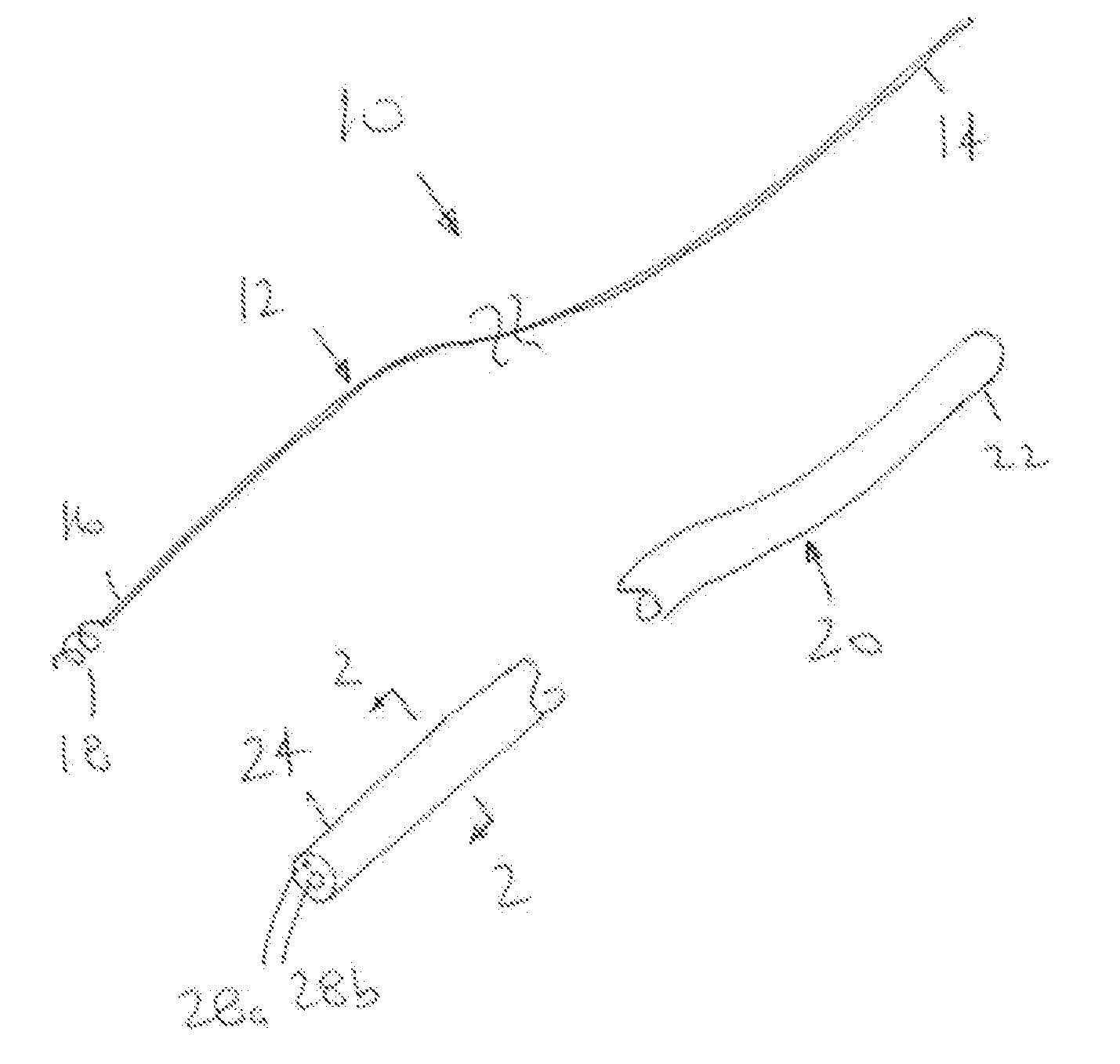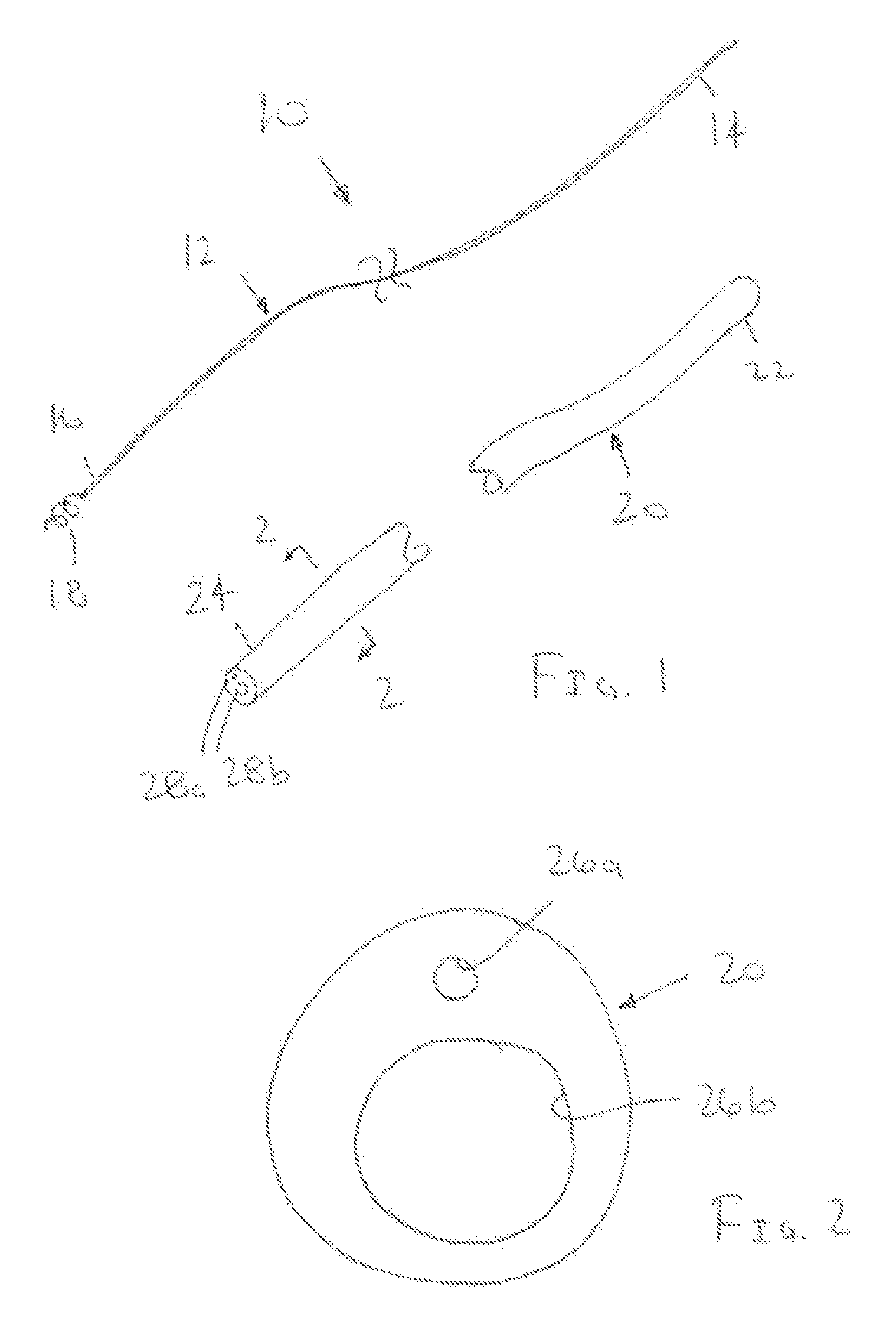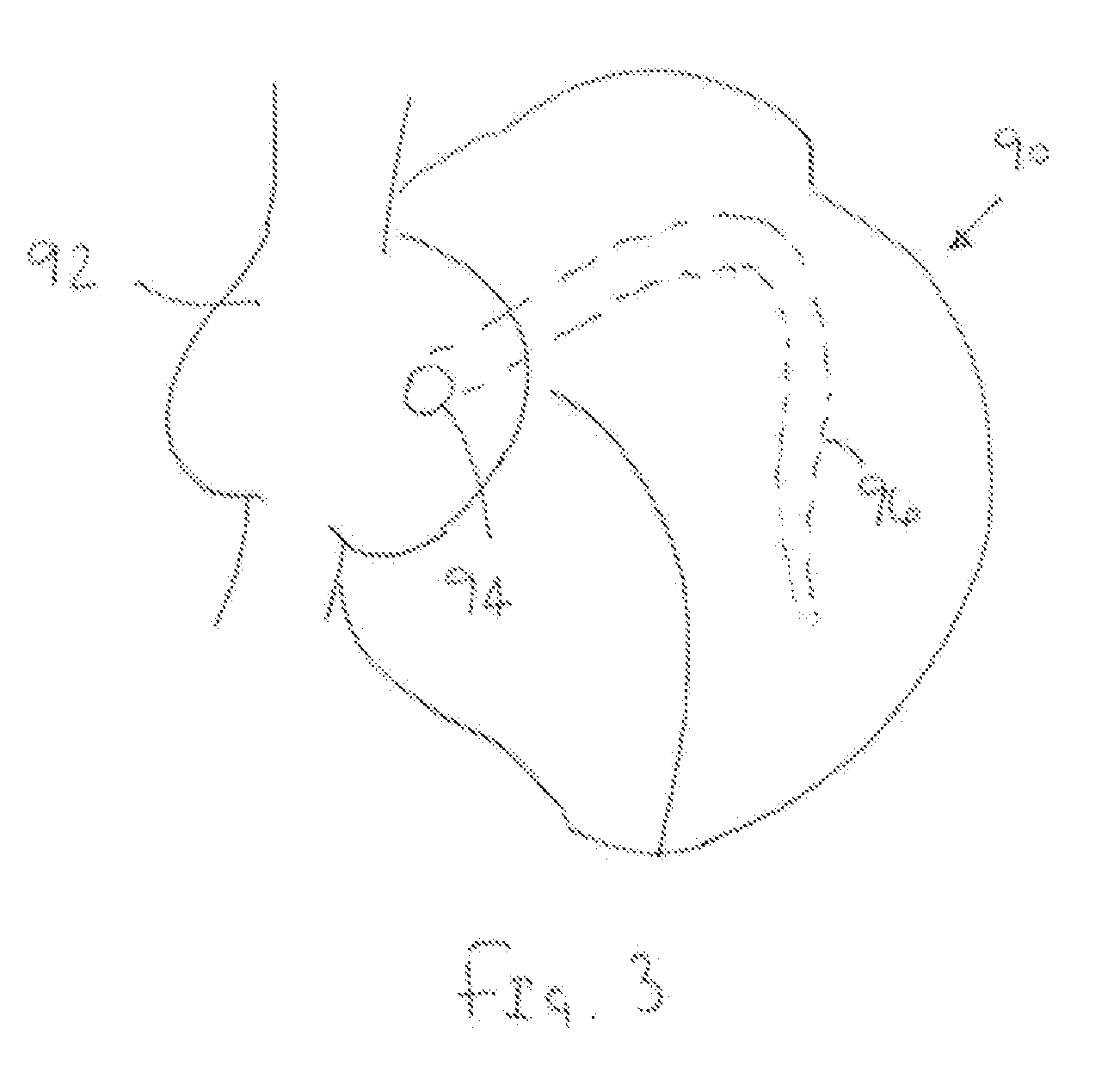Apparatus and methods for delivering transvenous leads
a technology of transvenous leads and apparatus, applied in the direction of transvenous endocardial electrodes, internal electrodes, therapy, etc., can solve the problems of difficult initial access of the coronary sinus, difficult to reach, and not easily slipped out of pla
- Summary
- Abstract
- Description
- Claims
- Application Information
AI Technical Summary
Benefits of technology
Problems solved by technology
Method used
Image
Examples
Embodiment Construction
[0023] Turning to the drawings, FIG. 1 shows an exemplary embodiment of a system 10, including a guidewire or other elongate rail 12 and a catheter or other tubular member 20. The system 10 may be used for delivering a lead, e.g., a pacing or other transvenous lead (not shown), or other instrument to a location within a body lumen, as described further below.
[0024] The guidewire 12 generally includes a proximal end 14, a distal end 16, and an anchor or other fixation device 18 on the distal end 16. The guidewire 12 may be formed using known materials and methods, e.g., metal, such as stainless steel or Nitinol, plastics, or composite materials. For example, the guidewire 12 may be formed from a single strand of solid or hollow wire, multiple strands, and the like. The guidewire 12 has sufficient length to extend from a location outside a patient's body, e.g., from a percutaneous entry site into the subclavian or femoral vein, to a target location where the distal end 16 is to be se...
PUM
 Login to View More
Login to View More Abstract
Description
Claims
Application Information
 Login to View More
Login to View More - R&D
- Intellectual Property
- Life Sciences
- Materials
- Tech Scout
- Unparalleled Data Quality
- Higher Quality Content
- 60% Fewer Hallucinations
Browse by: Latest US Patents, China's latest patents, Technical Efficacy Thesaurus, Application Domain, Technology Topic, Popular Technical Reports.
© 2025 PatSnap. All rights reserved.Legal|Privacy policy|Modern Slavery Act Transparency Statement|Sitemap|About US| Contact US: help@patsnap.com



